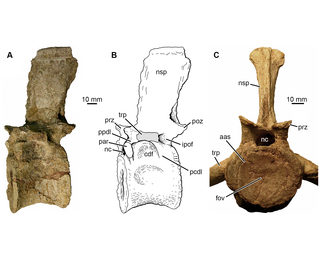The first evidence of spinal arthritis in Triassic reptiles was reported by scientists from the Leibniz-Institut für Evolutions- und Biodiversitätsforschung and the Universitätsmedizin Berlin.
The researchers examined the fossils of Angistorhinopsis ruetimeyeri a member of a group of archosauriform reptiles restricted to the Late Triassic that was discovered in Halberstadt, Germany in 1922.
Phytosaurs were one of the most common tetrapods that existed on Earth at the time and have been shown to have existed in several species across most of the Triassic Earth. This specimen is one of the few known fossils of a phytosaur that has a complete backbone.
Comparison of the phytosaur backbone with the remains of other fossils from the same time frame and earlier periods and CT scans of the animal’s backbone indicate that this specimen had spondyloarthropathy. Spondyloarthropathy is a form of rheumatoid arthritis that involves the spinal column and is still present in humans and animals in modern times.
Previously the abnormalities of the spine were attributed to deformation caused by assaults from other animals, but the new research is conclusive in indicating that the reptile from the Triassic period had arthritis.
Oddly, the fusing of the spinal vertebrae as a result of the disease may have given this animal an advantage in swimming speed due to the involvement of the entire spinal column in movement.















